05 Oct Reduce Distractions To Increase Workplace Safety
Distractions impair workplace performance and they’re one of the leading causes of on-the-job injuries. Injuries also affect employee morale, cause lasting, substantial employee impairment, increase insurance premiums, and reduce your company’s bottom line.
Here are some of the most common distractions in the workplace and measures you can take to minimize or eliminate them.
Pressure To Perform
Companies often demand employees meet deadlines or quotas to ensure profitability. However, getting work done quickly can often overshadow safety. The risk of injury increases substantially when supervisors or managers urge employees to work towards a goal instead of doing all work safely.
Employees may also push themselves to do more than they should to meet or exceed production goals. They may want management to notice their performance in hopes of a raise or promotion, or simply to ensure job security.
Regardless of whether the company or the employee exerts pressure to perform, the result is often the same. Employees take risks to meet goals, injuries impact your production goals and safety record, and insurance premiums increase.
Repetition Breeds Complacency
When employees perform the same tasks repeatedly, they’re confident they know their job. The work becomes routine and employees can do the work automatically. Unfortunately, daydreaming in the workplace or becoming over-confident can cause employees to overlook existing or new hazards which can lead to injuries.
Internal Distractions
Socializing with fellow employees is great in the lunchroom or during a coffee break, but it is a major distraction while working. When employees are busy talking about their weekend plans while they’re working, they’re not totally focused on their work.
Of course you can’t tell people not to talk to each other, and socialization is an important part of the work environment. However, you can minimize interruptions, which clearly pose a safety threat.
External Distractions
Employees often carry distractions with them when they come to work. They may have financial worries, problems with the kids, or they’re thinking about their upcoming vacation.
Even when a distraction originates outside the workplace, it still affects focus while working. Employers cannot block out these distractions, but they can monitor employee behavior.
Reducing Risk
Monitor Behavior
Since an employer cannot eliminate distractions, they must focus on employee behavioral changes. A strong relationship between managers, supervisors and the people they oversee is the best way to identify warning signs to reduce risk.
Employers should conduct regular walk-throughs to detect potential issues, discuss problems with employees, and seek ways to reduce distractions.
Variety & Proper Scheduling
Good managers and supervisors schedule work into digestible sections instead of assigning huge projects. This not only allows employees to take short breaks between each section, but it also makes employees feel more accomplished. There’s something extremely satisfying about “finishing” a job.
Managers and supervisors should also try to vary employee tasks so they’re not performing the same duties for long periods. Working employees until they’re fatigued or bored to tears isn’t beneficial to a smooth and safe workflow.
When employees tire or fall into a set routine they react slowly, make mistakes, can’t concentrate, and quality suffers. Of course, tired or bored employees are also more likely to injure themselves, which stops or impedes production.
Incorporate Breaks
Companies need to encourage employees to step away from their work to take a break, even when they’re trying to meet a deadline or production quota. Employees may skip breaks even when they’re entitled to them if the company does not cultivate a “safety first” environment.
A recent study shows that “micro-breaks” of just a few minutes can increase job satisfaction, make it more likely an employee will go above-and-beyond their job description, and they reduce emotional exhaustion. Micro-breaks also increase productivity and lower the risk of injuries due to distractions.
Limit Devices
Limiting MP3 players and cellphones to break time increases employee focus and minimizes risk. Employees can still receive emergency calls through the main office line or listen to music on a coffee or lunch break.
Enlist Employee Input
Employers should ask employees about problems they see in the workplace and take steps to resolve them. For instance, if a particular machine constantly jams and the employees must unjam it, then there’s a higher risk of injury.
An employee safety program provides consistent reinforcement and reliability.
A dedicated safety officer with the power to make changes is the employee go-to for reporting unsafe conditions or to make suggestions for improvement.
Encourage Wellness
Employees with a healthy lifestyle have superior stress management skills, improved focus, more energy, and a stronger body and mind. A Harvard Business School study also found companies that invest in wellness average a $2.71 return for every dollar spent due to increased productivity, decreased absenteeism, and reduced healthcare cost.
Many U.S. companies now institute wellness programs to reduce workplace distractions and improve health. It also improves employee retention and strengthens your brand.
A workplace wellness program can be as simple as encouraging lunch time walks to extensive training and testing. The US Chamber of Commerce Winning With Wellness report offers an excellent overview and steps to get started.
Managing risks such as workplace distractions improves safety and productivity. However, risk reduction requires analysis, consultation, diagnosis, and proactive planning.
Gilbert’s Risk Solutions’ long track record in risk analysis can help you improve your safety record, reduce insurance costs, and strengthen your brand. We’re local and reliable and easy to talk to, so contact us to discuss your needs. We’ve helped people for over 160 years, and we’re here for you, too.


No Comments